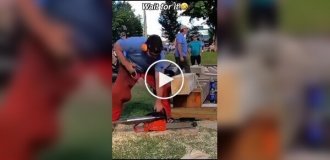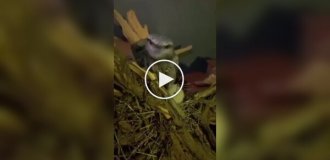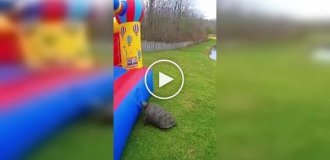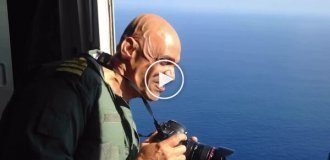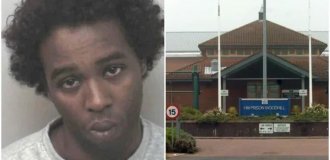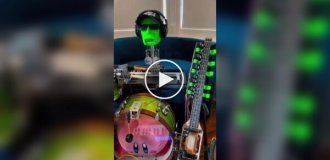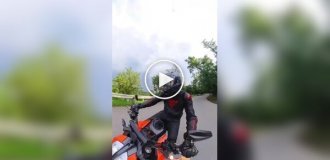Carpenter Henry McNish had the usual nickname for his profession. Friends called the guy Chipp (chip - shavings). But Henry's desire to earn extra money resulted in him sharing his nickname with someone else. And it glorified this other one. 
McNish decided to earn extra money on a trans-Antarctic expedition and got a job on Ernest Shackleton's ship. It was planned that the expedition would reach Antarctica, then the journey across the continent would continue on dogs. 
The team accepted both Henry, who in addition to his basic skills was an excellent tinsmith, and his pet.
Mrs. Chippy, a Scottish cat, got her name due to the fact that she obediently followed Chippy McNish on his heels, like a caring wife.
The name stuck. When Chippy McNish was chosen to crew Shackleton's ship, the Endurance, Mrs. Chippy went with him too. Her duty was to catch mice and rats and be pleasant company for the entire crew. She did an excellent job of entertaining the sea wolves. But after a month at sea, it turned out that this striped purr is in fact not a lady, but a gentleman. They decided not to change the nickname in order to avoid difficulties with getting used to it. 
Ernest Shackleton
Expedition photographer Frank Hurley took the only known photograph of Mrs. Chippy. However, many crew members wrote in their diaries and journals that he was strong in spirit and character, and testified to his confidence and ease at sea. 
Shackleton Expedition, 1916
Captain Frank Worsley described in detail Mrs Chippy's habit of climbing onto the rigging "in exactly the manner of a sailor climbing aboard", and meteorologist Leonard Hussey noted that he had a habit of provocatively walking on the roofs of dog houses. He also impressed the crew with his ability to walk on inch-wide yards during the most severe storms.
However, Mrs. Chippy's nimble paws sometimes failed. In an entry dated September 13, 1914, storekeeper Thomas Orde-Lees wrote that “an unusual thing happened during the night. The cat jumped overboard through one of the cabin windows, and the officer on watch, Lieutenant Hudson, hearing her scream, deftly turned the ship around and picked up the animal. She was in the water for 10 minutes or so.” 
Ice captivity
It was pulled out by ship's biologist Robert Clark, who was using one of his nets to collect samples. It appears that one of Mrs. Chippy's nine lives was spent on this sea adventure.
After the Endurance got stuck in the ice, the transcontinental plan had to be abandoned. Shackleton now focused on survival and began preparing plans for the team to march west to one of several possible destinations. 
This is how dogs lived in the ice
Shackleton ordered the weakest animals that would not survive the dangerous journey to be shot. Along with five sled dogs (including three puppies, one of which was the surgeon's pet), Mrs. Chippy was ordered to be killed. The decision is correct from a practical point of view. But it turned out to be too painful for the crew.
The ship's crew cared for Mrs. Chippy in the last hours of his life, hugging him and feeding him his favorite food - sardines, which may have been laced with sleeping pills.
In his diary dated October 29, 1915, Shackleton wrote:
This afternoon Sally's three youngest puppies, Sirius, Sue and Mrs. Chippy, the carpenter's cat, will have to be shot. In the new conditions, we cannot take on the maintenance of weak animals. McLean (who had a pet puppy), Crean (who was responsible for keeping the dogs) and the carpenter seemed to take the loss of their friends very hard. 
Mrs Chippy stamp
McNish proved an indispensable member of the crew when he, along with five other men, was selected to sail on one lifeboat to South Georgia, a distance of about 800 miles. He refitted the boat to make the journey possible and safe, and likely saved the lives of the entire crew.
McNish never forgave Shackleton for killing his cat. Their relationship deterioratedShackleton even threatened to shoot him for saying that the crew were no longer obliged to carry out the captain's orders, since their contract had ended after the sinking of the Endurance in November 1915. 
It was because of the conflict that Shackleton did not nominate McNish for the Polar Medal like other members of the expedition. Henry returned to the merchant navy. When health problems began, he went to work at the docks. The injury prevented him from working further. And he ended up in an asylum in Wellington, New Zealand, where he died in 1930. Although he was buried with full military honors in the Karori cemetery, after a few years his grave fell into complete disrepair.
It was not until 1959 that the New Zealand Antarctic Society raised funds for a headstone. 
In 2004, the same society decided to erect a monument for Mrs. Chippy. The public donated funds to create a life-size bronze statue of the cat, and later that year, about a hundred people gathered around McNish's grave and read words of gratitude to both the carpenter and his cat. 
There are no words on the grave about beloved Mrs. Chippy. However, they are not needed. And in memory of the little brave creature, who gave all her warmth to others, people leave flowers at the statue.
Add your comment
You might be interested in:

